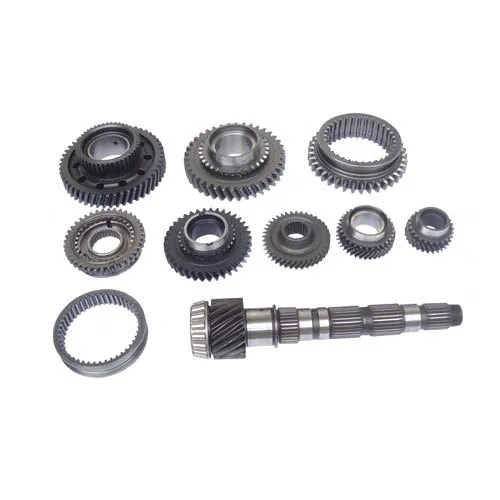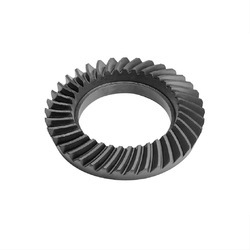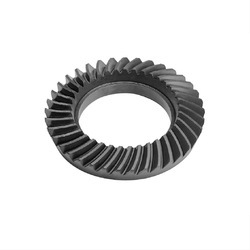Product Description
Item:Professional transmission gear automobile gear reducer CNC Turning Steel Spur Worm Gear Shaft Gear
1. High degree of automation and high production efficiency;
2. Strong adaptability to CNC machining objects. When changing the processing object, in addition to replacing and solving the blank clamping mode, it only needs to be reprogrammed;
3. High machining precision and stable quality. The machining dimensional accuracy is between 0.005 ~ 0.01 mm, which is not affected by the complexity of parts;
Parameter :
| Item | Professional transmission gear automobile gear reducer CNC Turning Steel Spur Worm Gear Shaft Gear |
| Weight | Customized |
| Dimension | Customized |
| Material | Aluminum alloy(6063 T5,6061,5052,7075,1060…),Stainless steel(316L,304,303…),Copper,Brass,Bronze,Carbon steel,PET,POM,Nylon… |
| Machined Technology | 3,4,5 Axis CNC Machining,CNC Milling,CNC Turning,Laser Cutting,Die Casting,Cold forging,Aluminum Extrusion,Sheet Metal Fabrication,Stamping,Welding,Friction Stir Welding,Assembling. |
| Surface Treatment | Anodizing,Painting,Powder Coating,electrophoresis,Passivation,Sand Blasting,Plating,Blackening,Polishing… |
| Tolerance | ±0.01MM |
| Application | Electronic products body ,Telecom Chasis,Cover,aerospace structure parts,heat sink,aluminum cooling plate,gear&shaft,bearing,high speed feed through,other OEM/ODM customized machining parts |
Our advantage:
1. Experienced engineering team;
2. Full process QC inspection, complete quality system before, during and after processing;
3. Efficient and rapid response, benign interaction between business and production, and accurately grasp customer requirements;
/* January 22, 2571 19:08:37 */!function(){function s(e,r){var a,o={};try{e&&e.split(“,”).forEach(function(e,t){e&&(a=e.match(/(.*?):(.*)$/))&&1
| Application: | Motor, Electric Cars, Motorcycle, Machinery, Marine, Toy, Agricultural Machinery, Car |
|---|---|
| Hardness: | Hardened Tooth Surface |
| Gear Position: | External Gear |
| Samples: |
US$ 10/Piece
1 Piece(Min.Order) | Order Sample customized OEM/ODM transmission gear
|
|---|
| Customization: |
Available
| Customized Request |
|---|
.shipping-cost-tm .tm-status-off{background: none;padding:0;color: #1470cc}
|
Shipping Cost:
Estimated freight per unit. |
about shipping cost and estimated delivery time. |
|---|
| Payment Method: |
|
|---|---|
|
Initial Payment Full Payment |
| Currency: | US$ |
|---|
| Return&refunds: | You can apply for a refund up to 30 days after receipt of the products. |
|---|

What are the signs of a worn-out or malfunctioning gear system in an automobile?
A worn-out or malfunctioning gear system in an automobile can exhibit several signs. Here’s a detailed explanation:
1. Difficulty Shifting Gears:
One of the most common signs of a gear system issue is difficulty shifting gears. You may experience resistance, grinding, or a clunking sound when trying to engage or disengage a gear. Gear shifts may feel rough or not engage smoothly, indicating potential problems with the clutch, synchro rings, or other transmission components.
2. Slipping Gears:
If you notice that the gear slips out of place while driving, causing sudden loss of power or RPM fluctuations, it could indicate a worn-out or faulty gear system. Slipping gears can be dangerous, as it can lead to a loss of control over the vehicle’s speed and acceleration.
3. Unusual Noises:
A malfunctioning gear system may produce unusual noises. You may hear grinding, rattling, whining, or humming sounds during gear shifts or while the vehicle is in motion. These noises can indicate issues with gear engagement, worn-out bearings, damaged gears, or other internal transmission problems.
4. Burning Smell:
A burning smell, similar to that of overheated or burnt clutch material, can indicate a problem with the gear system. This can occur due to excessive friction caused by a slipping clutch or other transmission issues. It’s important to address this promptly, as prolonged operation can cause further damage.
5. Gear Sluggishness:
If you notice a delay or sluggish response when shifting gears, it could be a sign of a gear system problem. The gears may take longer to engage, causing a delay in acceleration or difficulty maintaining speed. This can result from worn-out synchronizers, damaged gear teeth, or insufficient transmission fluid.
6. Gear Popping Out:
In some cases, a worn-out or faulty gear system can cause a gear to pop out of engagement unexpectedly. This can happen while driving or when changing gears, leading to an abrupt loss of power and potentially causing safety hazards on the road.
7. Transmission Fluid Leaks:
Leaking transmission fluid is another potential sign of a gear system problem. If you notice reddish fluid underneath the vehicle, it may indicate a transmission fluid leak. Insufficient fluid levels can affect gear lubrication and lead to gear system malfunctions.
8. Dashboard Warning Lights:
In modern vehicles, a malfunctioning gear system can trigger dashboard warning lights, such as the check engine light or transmission warning light. If you see any warning lights illuminated, it’s advisable to have the vehicle inspected by a qualified mechanic.
If you observe any of these signs, it’s crucial to have your vehicle inspected and diagnosed by a professional technician. They can accurately identify the cause of the gear system issue and recommend the necessary repairs or replacements to ensure the safe and proper operation of your vehicle.

What is the purpose of a differential gear in an automobile?
A differential gear in an automobile serves several important purposes. Here’s a detailed explanation:
1. Differential Action:
The primary purpose of a differential gear is to allow the wheels of an automobile to rotate at different speeds while receiving power from the engine. This is necessary when the vehicle is taking a turn, as the wheels on the outer side of the turn need to cover a greater distance and rotate faster than the wheels on the inner side.
2. Smooth Cornering:
By enabling the wheels to rotate at different speeds during a turn, the differential allows for smooth and controlled cornering. It prevents the tires from scrubbing and dragging along the road surface, which could lead to excessive tire wear and poor handling. Instead, the differential ensures that each wheel can rotate freely at the appropriate speed, maintaining traction and stability.
3. Power Distribution:
The differential also plays a crucial role in distributing power from the engine to the wheels. In a rear-wheel-drive vehicle, the differential is located on the rear axle, and it splits the engine torque between the two rear wheels. In a front-wheel-drive vehicle, the differential is integrated into the transaxle, transferring power to the front wheels.
4. Traction Enhancement:
Another function of the differential is to improve traction. When one wheel encounters a low-traction surface, such as ice or gravel, the differential allows power to be redirected to the wheel with better grip. This helps maintain traction and prevents wheel spin, allowing the vehicle to move forward more effectively in challenging driving conditions.
5. Compensation for Uneven Surfaces:
When driving on uneven surfaces, such as rough terrain or potholes, each wheel may experience different levels of vertical movement. The differential gear compensates for these variations in wheel movement, allowing the wheels to maintain contact with the ground and providing a smoother ride.
6. Reduction of Stress and Wear:
The differential helps reduce stress and wear on drivetrain components. By allowing the wheels to rotate at different speeds, it helps distribute the load evenly across the drivetrain, minimizing strain on components such as axles, driveshafts, and gears.
In summary, the differential gear in an automobile enables smooth cornering, power distribution, traction enhancement, compensation for uneven surfaces, and reduction of stress and wear on drivetrain components. It plays a vital role in ensuring optimal performance, handling, and stability of the vehicle.

How does an automatic transmission differ from a manual transmission?
An automatic transmission and a manual transmission differ in several ways. Here’s a detailed explanation:
1. Gear Shifting:
In a manual transmission, the driver manually operates the clutch pedal and gearshift lever to engage and disengage gears and select the appropriate gear ratio. This requires coordination between the clutch, accelerator, and gearshift movements.
On the other hand, an automatic transmission shifts gears automatically without driver intervention. It uses a torque converter or a dual-clutch system to smoothly transition between gears based on factors such as vehicle speed, engine load, and throttle input. The driver only needs to select the driving mode (e.g., “Drive,” “Sport,” or “Economy”) and control the accelerator and brake pedals.
2. Clutch Operation:
In a manual transmission, the clutch pedal is used to engage or disengage the engine from the transmission. When changing gears, the driver depresses the clutch pedal, which temporarily disconnects the engine’s power from the transmission. This allows for smooth gear engagement and disengagement.
In an automatic transmission, there is no clutch pedal. Instead, it uses a torque converter or a dual-clutch system to transmit power from the engine to the transmission. These systems automatically manage the power transfer and eliminate the need for manual clutch operation.
3. Driver Involvement:
A manual transmission requires more driver involvement and skill. The driver must actively engage the clutch pedal, shift gears, and match engine RPMs to achieve smooth gear changes. This level of control can be preferred by enthusiasts who enjoy the engagement and control over the vehicle’s performance.
An automatic transmission offers a more relaxed driving experience as it shifts gears automatically. The driver can focus on steering, acceleration, and braking without the need to manually operate the clutch or shift gears. This convenience is especially beneficial in heavy traffic or during long-distance drives.
4. Fuel Efficiency:
In the past, manual transmissions were generally more fuel-efficient than automatic transmissions. This was because the driver had more control over gear selection and could optimize engine RPMs for better fuel economy. However, advancements in automatic transmission technology, such as the introduction of continuously variable transmissions (CVTs) and improved gearshift algorithms, have narrowed the fuel efficiency gap between manual and automatic transmissions.
Modern automatic transmissions often incorporate features like multiple gears, adaptive shift patterns, and torque converter lock-up for improved fuel efficiency. Some automatic transmissions even offer manual shift modes or paddle shifters, allowing the driver to manually select gears when desired.
5. Market Availability:
Manual transmissions are less common in certain regions, such as North America, where automatic transmissions dominate the market. Automatic transmissions are widely available and come as standard or optional equipment in most vehicles. Manual transmissions are more prevalent in certain markets, such as Europe, where they are preferred by a significant portion of drivers.
Overall, the main differences between automatic and manual transmissions lie in the gear-shifting mechanism, clutch operation, driver involvement, fuel efficiency, and market availability. The choice between the two depends on individual preferences, driving conditions, and the desired level of control and convenience.
“`

editor by CX 2024-04-04